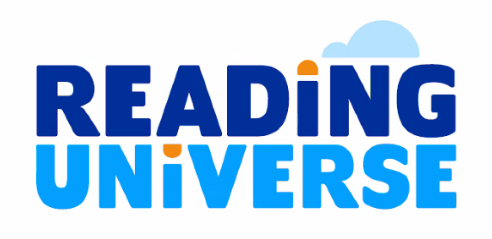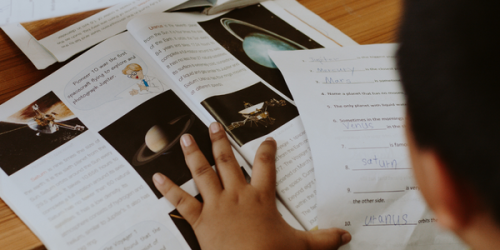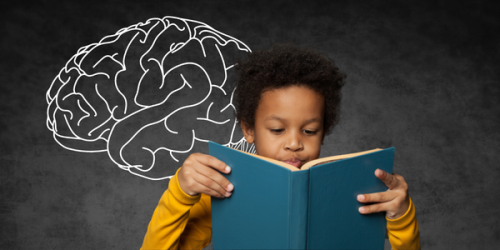A note from NCTQ President Dr. Heather Peske
We have a literacy crisis in this country. Last year’s NAEP scores found that more than one third of fourth grade students can’t read at a basic level, and that rate climbs even higher for students of color, those with learning differences, and those who grow up in low-income households. This dismal data has nothing to do with the students and families, and everything to do with inequities in access to effective literacy instruction.
But there is good news: Decades of research has resulted in a rich, robust understanding of how children learn to read.
So what does this research say? Inspired by a conversation at a recent Barksdale Reading Institute Lunch & Literacy forum, researcher Dr. Reid Lyon developed a clear, concise summary of the research on how children learn to read.
Here we share Dr. Lyon’s “Ten Maxims,” originally published by Reading Universe. These maxims underlie NCTQ’s own work to advocate for the science of reading in teacher preparation. By increasing understanding and adoption of scientifically based reading instruction, together we can address the literacy crisis head-on, reversing historical patterns of inequity and changing the lives of millions of our children.
– Dr. Heather Peske

Ten maxims: What we’ve learned so far about how children learn to read
By Dr. Reid Lyon
Over the last 50 years, there’s been a vast outpouring of research about reading development, drawing on insights from neuroscientists, psychologists, linguists, speech pathologists, educators and other experts. I’m sometimes asked to summarize, in plain language, what we’ve learned so far. These ten maxims represent my best attempt at doing that.
This may seem like a fool’s errand, because no set of maxims can fully convey the scope or the nuance of thousands of studies. I hope nevertheless that these maxims might be useful in crystallizing some of the most essential findings. In collaboration with some outstanding researchers and practitioners, I’ve compiled here a selective list of studies that underlie each of the ten maxims. The research behind the maxims addresses a wide range of individual differences in reading development, reading difficulties and reading instruction. Taken as a whole, the studies encompass children identified as having dyslexia and other learning disabilities as well as children who struggle with reading as a result of inadequate instruction. Many of the studies also include proficient readers.
Because these maxims are very broad, there is of course more to say about specific subpopulations of students with distinct strengths and needs. I encourage advocates for these students to formulate additional maxims that are not adequately covered by these first ten. Any additions should be in clear, consumer-friendly language and supported by cited studies that report relevant empirical findings.
The overarching message is that learning to read is a complex process involving multiple abilities, skills, and knowledge. Each is essential but none is sufficient on its own.
With that as prologue, here are my ten maxims:
- Almost all children learn to speak naturally; reading and writing must be taught.
- Literacy begins at birth. It is rooted in early social interactions and experiences that include regular exposure to oral language and print. Strong roots tend to produce stronger readers.
- All good readers are good decoders. Decoding should be taught until children can accurately and independently read new words. Decoding depends on phonemic awareness: a child’s ability to identify individual speech sounds. Decoding is the on-ramp for word recognition.
- Fluent readers can instantly and accurately recognize most words in a text. They can read with expression and at an appropriate rate for their age. Reading fluency requires comprehension AND it supports comprehension.
- Comprehension—the goal of reading—draws on multiple skills and strengths, including a solid foundation of vocabulary and background knowledge.
- One size does not fit all: use student data to differentiate your instruction.
- Direct, systematic instruction helps students develop the skills they need to become strong readers. Indirect, three-cueing instruction is unpredictable in its impact on word reading and leaves too much to chance.
- These maxims apply to English Learners/Emergent Bilinguals, who often need extra support to bolster their oral language as they learn to read and write in a new language.
- We should support students who speak languages or dialects other than General American English at home, by honoring their home language and by giving them expanded opportunities to engage with General American English text.
- To become good readers and writers, students need to integrate many skills that are built over time.
This piece originated with the Barksdale Reading Institute’s Lunch & Literacy forum and originally appeared on the Reading Universe website. Reading Universe is a joint project of the Barksdale Reading Institute, WETA/Reading Rockets, and First Book that provides free resources for educators and families.
About the guest author:
Dr. Reid Lyon, a neuroscientist and specialist in learning disorders, joined the faculty of Communication Science and Disorders at Northwestern University in 1980 where he also directed the neuropsychology laboratory. In 1983 Dr. Lyon was recruited by the Stern Center for Language and Learning in Burlington, Vermont where he served as the director of research. He also served as a clinical associate professor of neurology at the University of Vermont Medical School. From 1992 to 2005, Dr. Lyon served as a research neuropsychologist and the chief of the Child Development and Behavior Branch of the NICHD at the National Institutes of Health; in this role he developed and oversaw research programs in cognitive neuroscience, learning and reading development and disorders, behavioral pediatrics, cognitive and affective development, School Readiness, and the Spanish to English Reading Research program. He designed, developed and directed the 44-site NICHD Reading Research Network. After leaving the NIH, Dr. Lyon held distinguished scientist and distinguished professorships at the University of Texas, Dallas (neuroscience) and Southern Methodist University (educational leadership).
Dr. Lyon is the author and co-author of over 130 peer reviewed journal articles, books, and book chapters addressing developmental neuroscience, learning and reading disorders/dyslexia, and the translation of science into practice and policy. He also co-authored the definition of dyslexia used at the NIH and worldwide. Dr. Lyon received the NIH Director’s Award twice. Once for his contributions to the neuroscience of learning and learning disorders. He also received the Vietnam Veterans of America Excellence in The Sciences Award for contributions to educating veterans about the neuroscience of Combat PTSD in 2013. Dr. Lyon, a former paratrooper and combat veteran, received the Bronze Star, the Combat Infantryman Badge among other combat awards during his 15th month tour in Vietnam including the 1968 Tet Offensive.
Additional contributors to this piece include: Jane Ashby, Louise Dechovitz, Linda Diamond, Jan Hasbrouck, Kari Kurto, and Julie Washington. With appreciation to Kelly Butler, Claude Goldenberg, and Noel Gunther.
More like this

Teacher prep matters; let’s start acting like it

What do NASA scientists, historians, and strong readers have in common? Content knowledge

Messaging from reading advocates comes off as lopsided. The science isn’t

Getting districts and teacher prep on the same page on reading pays off



